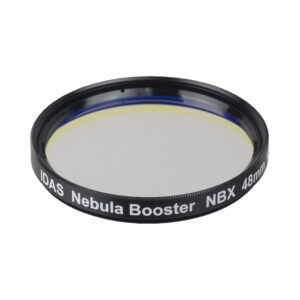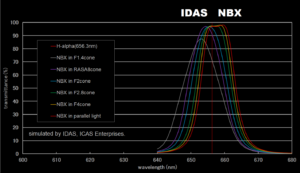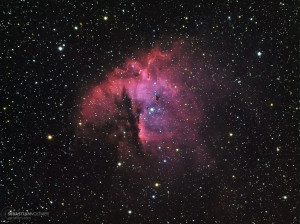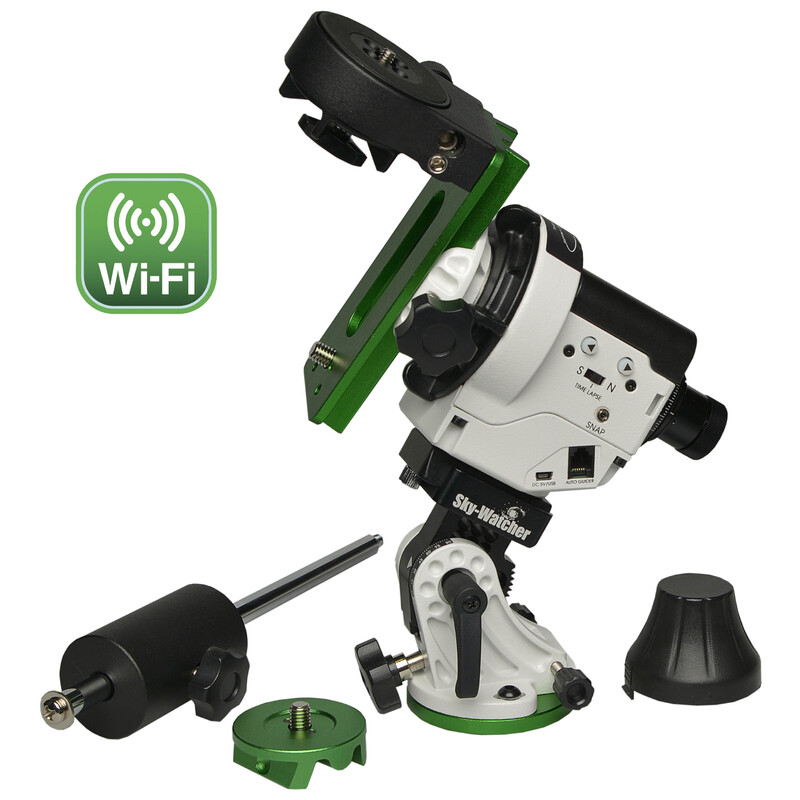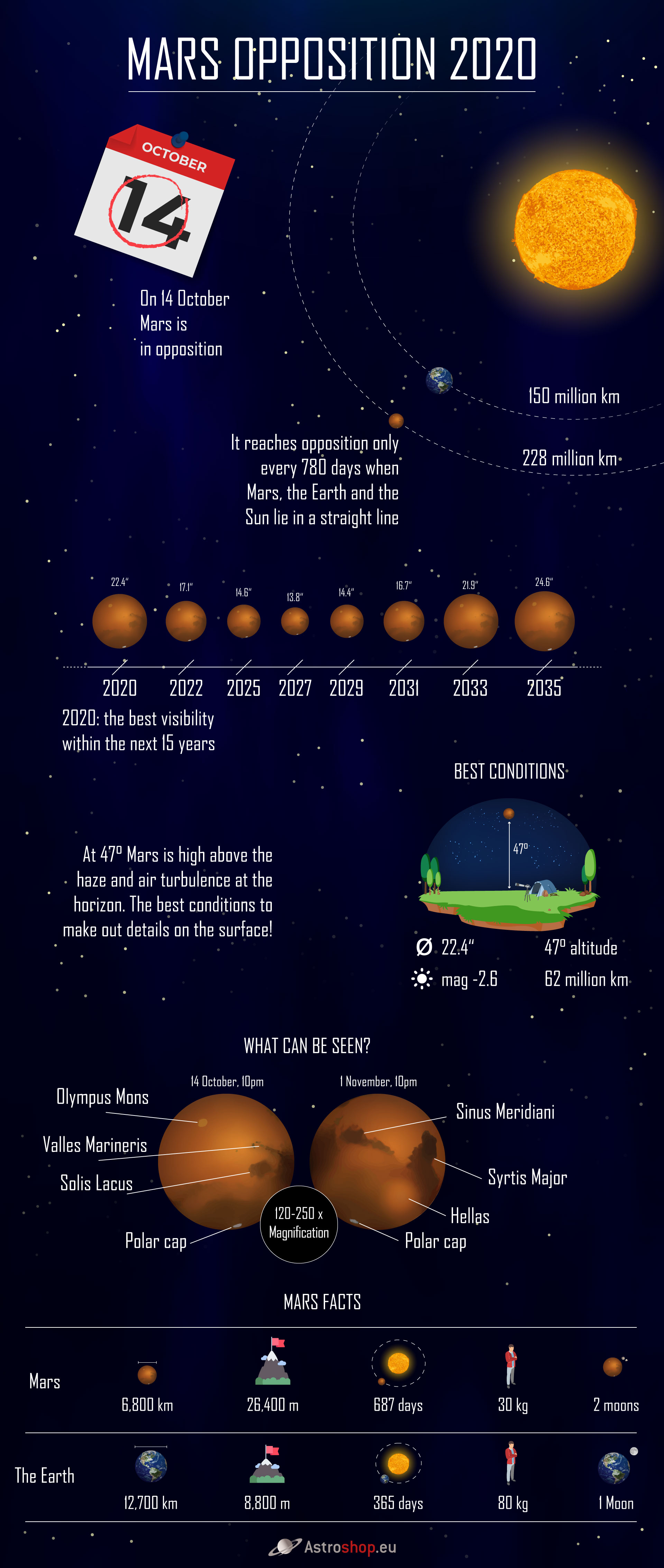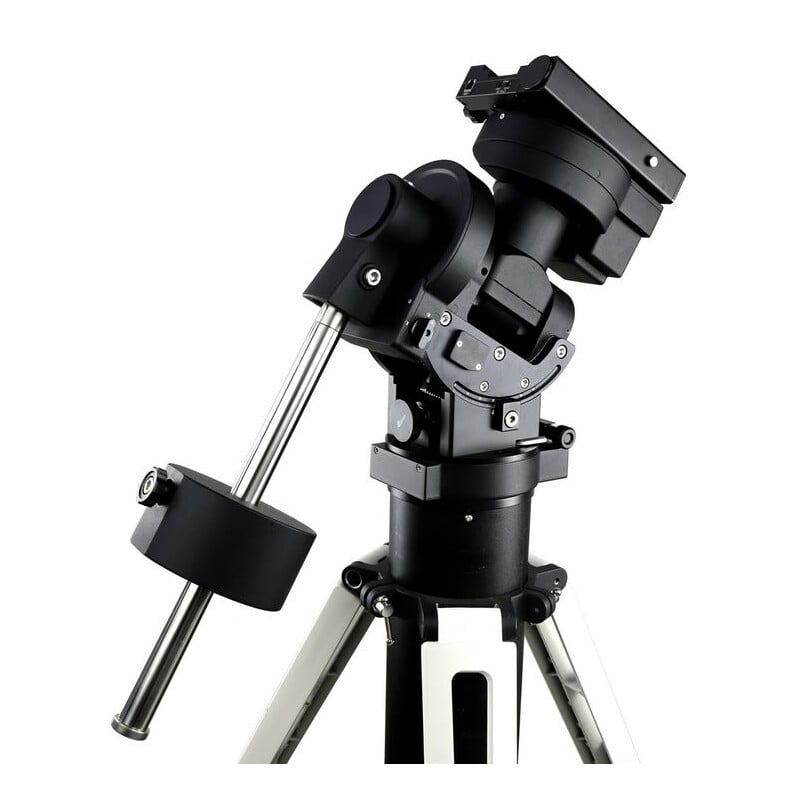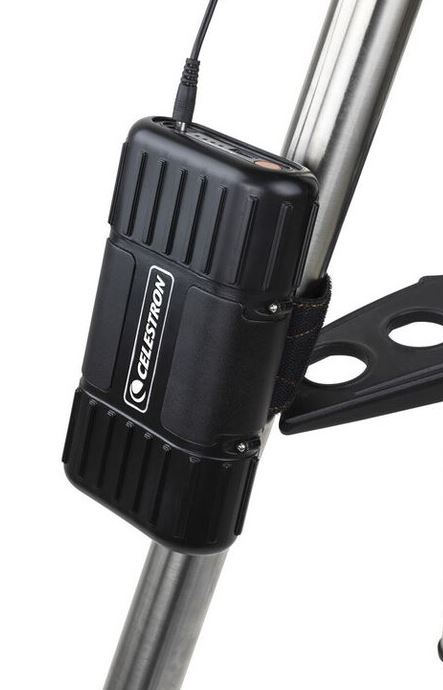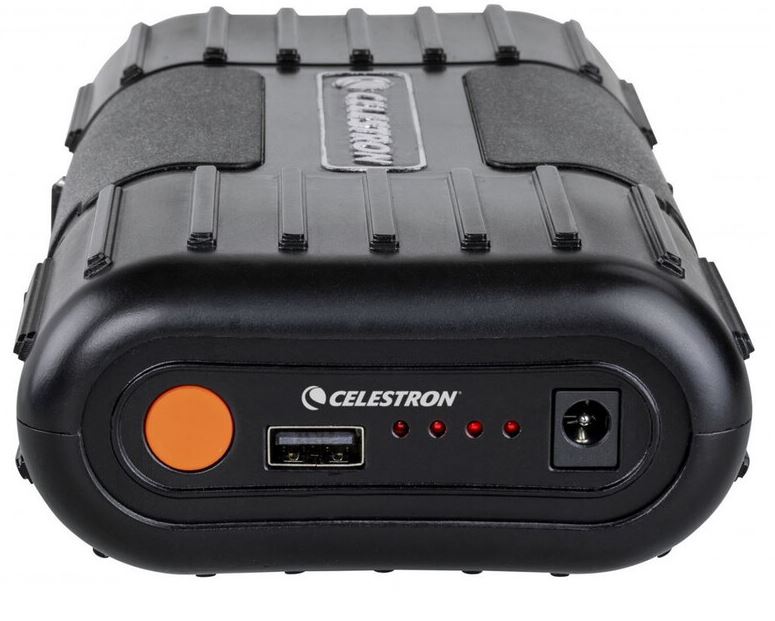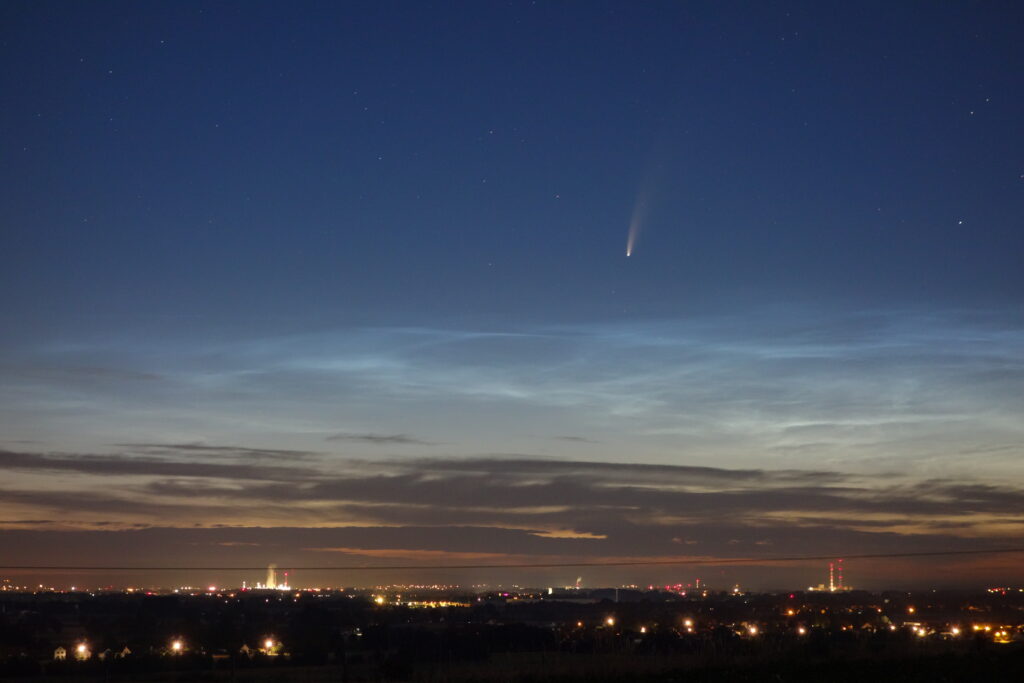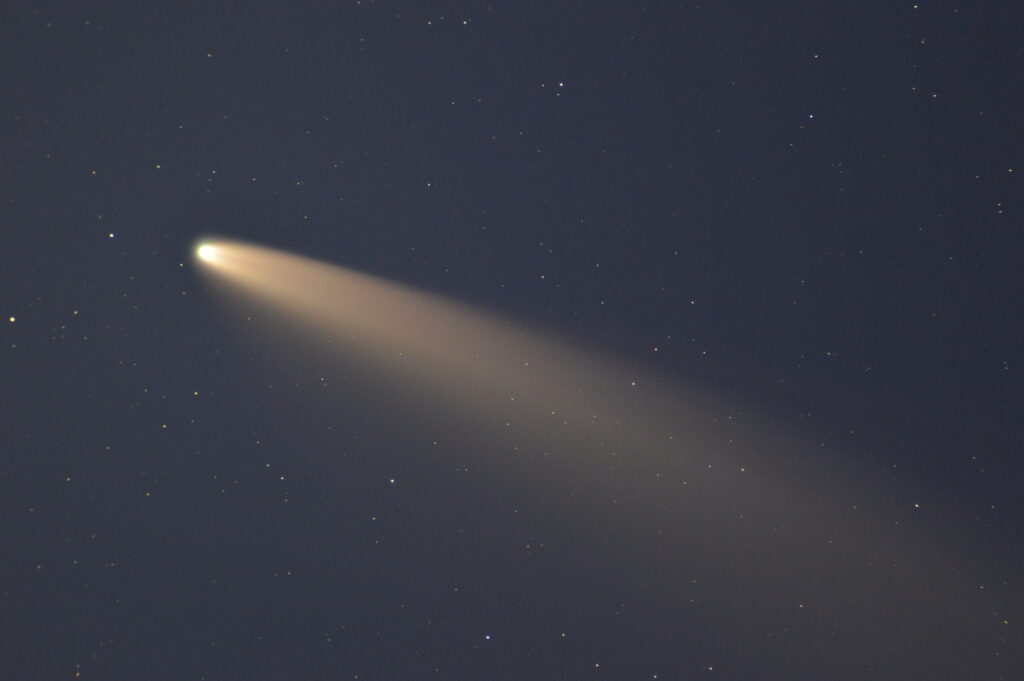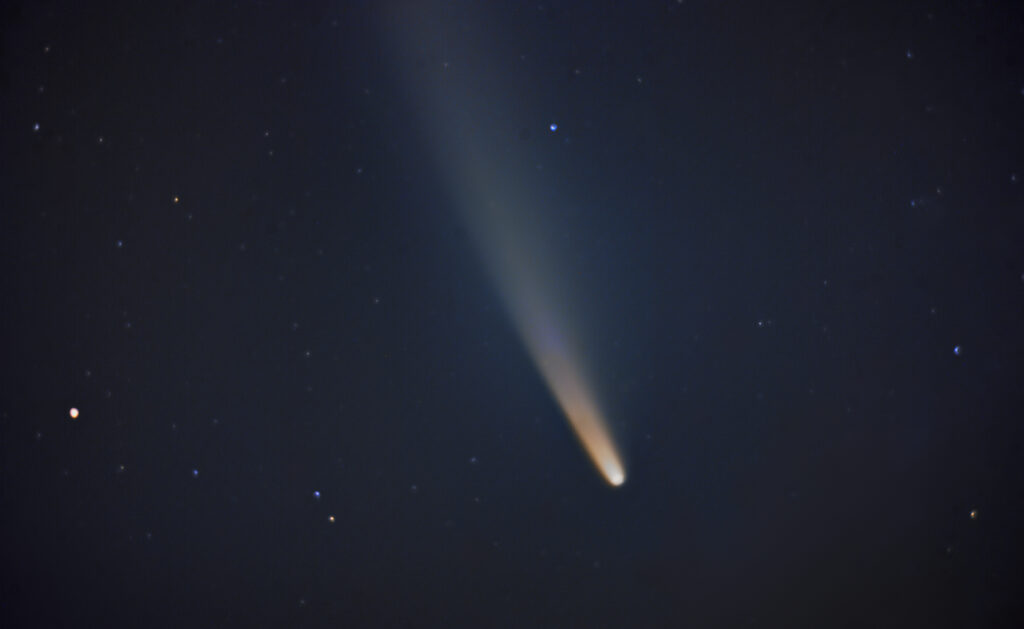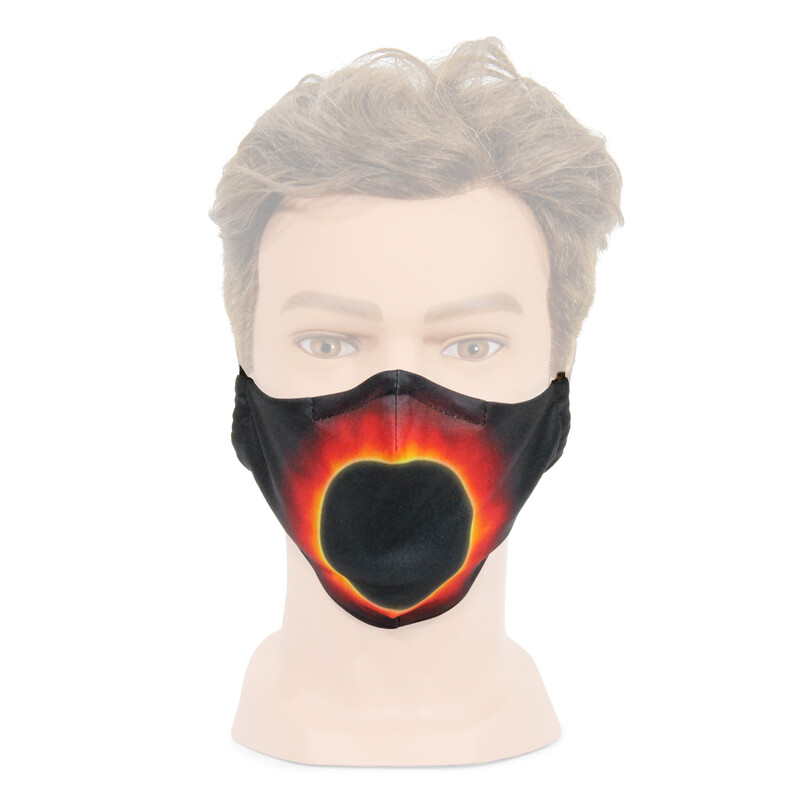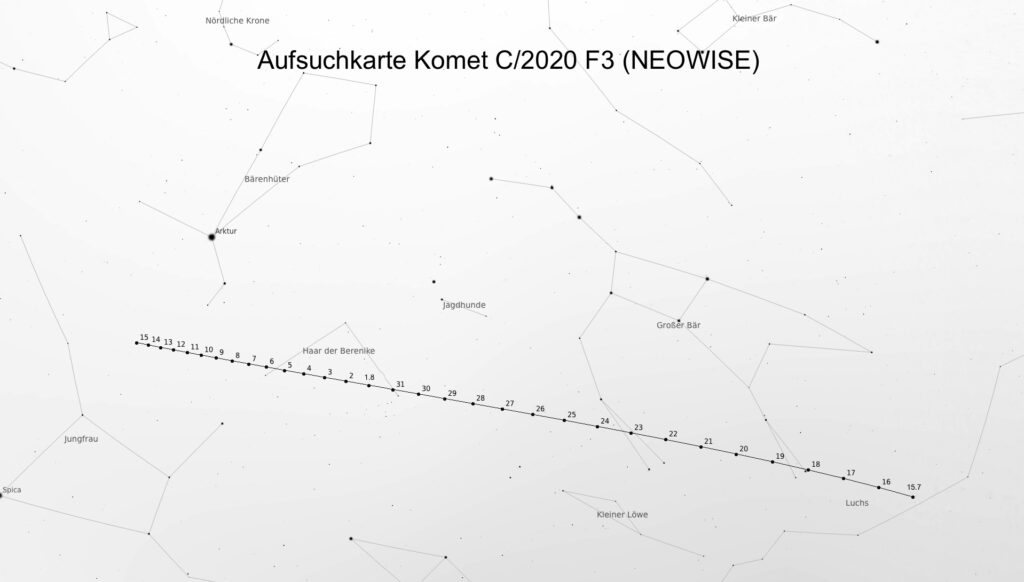Mars at opposition, Moon-less Leonids and an interesting star occultation in the evening. Once again, there are plenty of reasons to look to the stars.
Don’t let anything pass you by in the next three months: In the ‘Astronomy Highlights in Autumn 2020’ infographic, you will find a quick overview of numerous important celestial events. In the accompanying text you will find further useful details.
We wish you many exciting hours of viewing.
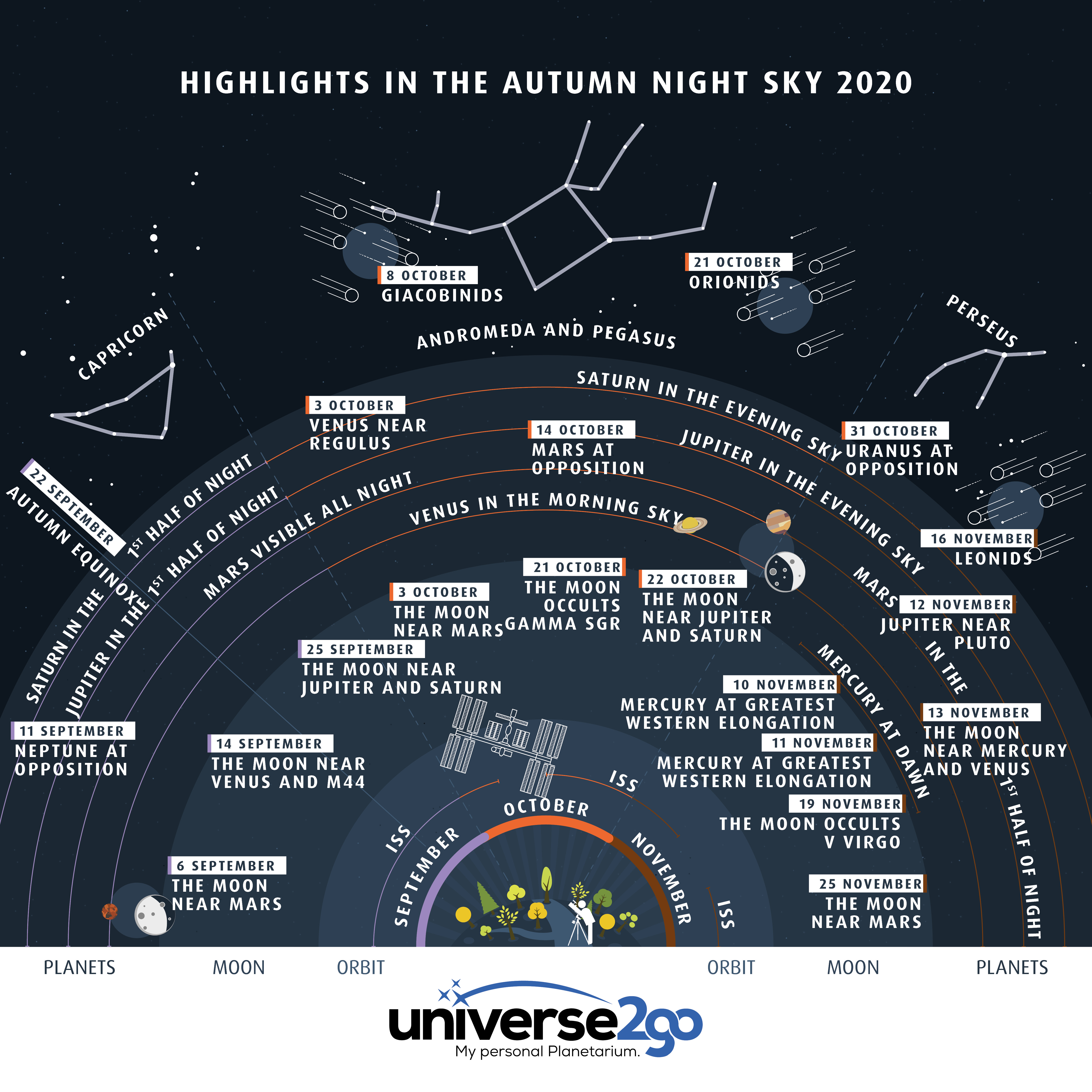
September:
06/09 Conjunction between the Moon and Mars
On the evening of the 5th, the Moon and Mars are in close alignment and both appear above the eastern horizon from 21:30 CEST. They draw ever closer throughout the night, until the early hours of 06/09 when they are less than one degree apart.
11/09 Neptune at opposition
Neptune is the solar system’s outermost planet. Many observers have only caught glimpses of it to date. But now it has reached its opposition and will spend the whole night in a favourable position in the sky. We can find it above the eastern horizon, between Aquarius and Pisces, during the evening. At mag 7.8, it can be found using any pair of binoculars, but 4.3-billion-kilometre-away Neptune’s planetary disc can only be seen through a telescope.
14/09 Conjunction between the Moon, Venus and M44
Are you an early riser? Excellent. Then you will be able to enjoy an encounter between the Moon, Venus and the open star cluster, M44. It can be seen by the naked eye in dark skies. All three celestial objects are in an almost straight line, with M44 at its centre. What makes this particularly attractive is that the Moon is waning and only 14% illuminated.
25/09 Conjunction between the Moon, Jupiter and Saturn
Throughout the summer, we have been able to observe Saturn and Jupiter in Sagittarius in the evenings. It was the highlight of every astronomical observation. Shortly after the start of autumn, on 25/09, an attractive view of them presents itself with the Moon.
October:
03/10 Conjunction between the Moon and Mars
This month, the Moon has also noticed that Mars is the star of the month. After all, there are two conjunctions between them in October. Tonight they are separated by a distance of 4 degrees.
03/10 Conjunction between Venus and Regulus
Just before dawn, we see the spring constellation Leo appearing in the east. Venus and the main star, Regulus, are strikingly close together – the latter of which ranks as the 22nd brightest star in the night sky. It is fun to compare the large difference in magnitudes between the two celestial bodies at the same time.
08/10 Giacobinids
The Giacobinids or Draconids are a meteor shower which appears to stem from the constellation Draco. The maximum rates can be expected on 8 October. Unfortunately the expected number cannot be predicted as it can vary considerably.
The radiant is located near the star Beta Draconis. Draco is part of a circumpolar constellation which is why the radiant is at its optimal visible altitude in the evening.
14/10 Mars at opposition
Mars orbits the Sun once every 686 days, reaching opposition approximately once every two years. The last opposition, in 2018, gave us a perigee and a supersized Mars, but it was low above the horizon. This year, its disc diameter is only two arc seconds smaller but it is located considerably higher in the sky. This results in one of the best opportunities for observation in the coming years.
21/10 Orionids
The Orionids are a smaller meteor shower with around 20 meteors per hour. The radiant is located in the constellation of Orion, near the Betelgeuse star. Although you can observe the meteor shower all month, it peaks between October 20 and 21. The best time for observations is between 22:00 and 05:00.
21/10 The Moon occults Gamma Sgr
Lunar occultations are fascinating for every observer, especially when they start on the dark side of the Moon. The evening of 21 October provides an ideal example of this. The bright mag 2.8 star, Gamma Sgr, is occulted in the constellation Sagittarius at 20:35. With bright stars like this, the effect is amazing. It disappears behind the Moon as if it has been switched off and only reappears at 21:42 on the far side. In many places, the Moon may have already set by then.
22/10 Conjunction between the Moon, Jupiter and Saturn
Barely one month after the last conjunction, the Moon once again joins the planets Jupiter and Saturn. The best observation time is at dusk.
29/10 Conjunction between the Moon and Mars
This evening, the Moon and Mars are meeting and will be separated by a distance of 3 degrees.
31/10 Uranus at opposition
Uranus is one of the outermost gas giants. In telescopes, it appears as a tiny green disc with no recognisable details. However, it can still be identified as a planet. Look for Uranus using a star chart or, even easier, with your telescope’s GoTo system. The planet’s disc can then be identified at a magnification of 150-200x.
November:
10/11 Mercury at greatest western elongation
Mercury is at its 19 degree greatest angular distance from the Sun. This results in it reaching its best morning visibility for the year. From the 10th, we can see Mercury rising above the eastern horizon at around 05:30. Emerging from the haze, it shines brightly below Venus.
11/11 The Moon occults v Virgo
You should get out of bed early on 11 November as, from 06:40 in the morning, a rare and very visible star occultation is taking place. The Moon occults the bright, mag 4 star, v Virgo.
12/11 Conjunction between Jupiter and Pluto
Jupiter and Pluto are passing each other and reach a proximity of up to 40 arc seconds on 12 November. Normally, it is difficult to readily find the former planet and current dwarf planet. This is because it is faint and undistinguishable from a star. However, Jupiter provides us with a good reference point for spotting Pluto without using GoTo mounts.
13/11 Conjunction between the Moon, Mercury and Venus
Daybreak presents a configuration to make every skywatcher’s eyes light up. Venus, Mercury and the almost-translucent crescent Moon can be found towards the east, in the constellation Virgo. The perfect chance for an atmospheric picture of the night sky.
16/11 Leonids
The Leonids reach their peak between 16 and 17 November. Along with the Perseids, they are one of the most famous meteor showers. There have been years in which these meteors have fallen like raindrops from the sky. This generally takes place every 33 years when the Earth runs into the Leonid cloud. In normal years, the shower does not exceed 20 meteors per hour at its peak. This year, the slender crescent Moon sets early on and we can enjoy meteors all night long without interruption.
19/11 Conjunction between the Moon, Jupiter and Saturn
The constellation Sagittarius finally disappears from the early evening sky, however today we can spot the five-day-old Moon and the planets Jupiter and Saturn in a neat group just above the horizon.
25/11 Conjunction between the Moon and Mars
The Moon and Mars today meet each other at a distance of around 6 degrees.



